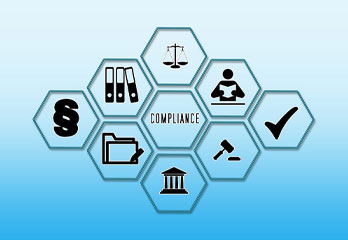Maximizing ROI with IT Outsourcing: Strategies for 2025
In the fast-paced world of business, organizations are increasingly turning to IT outsourcing as a strategic approach to enhance efficiency, reduce costs, and drive innovation. As we look toward 2025, the focus on maximizing return on investment (ROI) from outsourcing has never been more critical. This article explores effective strategies for businesses to optimize their IT outsourcing efforts, ensuring they not only save money but also achieve significant value from their partnerships.
Understanding the Importance of IT Outsourcing
IT outsourcing has evolved from a mere cost-cutting measure to a vital component of strategic business planning. Companies are now leveraging external expertise to enhance their operational capabilities, allowing them to focus on core business functions while benefiting from specialized skills and technologies.
The Shift in Perspective
Historically, businesses viewed outsourcing primarily as a way to reduce expenses. However, the landscape has shifted dramatically. Today, organizations recognize that outsourcing can provide access to advanced technologies, innovative solutions, and a broader talent pool. This shift in perspective is crucial for maximizing ROI.
Key Benefits of IT Outsourcing
-
Access to Expertise: Outsourcing allows companies to tap into specialized skills that may not be available in-house.
-
Cost Efficiency: By outsourcing, businesses can often reduce operational costs associated with hiring and training employees.
-
Scalability: Outsourcing provides the flexibility to scale operations up or down based on demand without the burden of long-term commitments.
-
Focus on Core Competencies: By delegating IT functions, organizations can concentrate on their primary business objectives.
Aligning IT Outsourcing with Business Goals
To maximize ROI, it is essential to align outsourcing initiatives with the overall business strategy. This alignment ensures that outsourcing efforts contribute directly to achieving organizational objectives.
Defining Clear Objectives
Before entering into an outsourcing agreement, businesses should clearly define their goals. Are they looking to enhance service delivery, improve customer satisfaction, or reduce time-to-market for new products? Establishing specific, measurable objectives will guide the outsourcing strategy and help evaluate its success.
Continuous Communication
Maintaining open lines of communication between internal teams and outsourcing partners is vital. Regular updates and feedback loops can help ensure that both parties are aligned and working toward common goals.
Choosing the Right Outsourcing Partner
Selecting the right outsourcing partner is one of the most critical decisions a business can make. The right partner can significantly enhance the effectiveness of outsourcing efforts.
Evaluating Potential Partners
When assessing potential outsourcing partners, consider the following criteria:
-
Industry Experience: Look for partners with a proven track record in your industry.
-
Technical Expertise: Ensure the partner possesses the necessary technical skills and capabilities.
-
Cultural Fit: A partner that aligns with your company culture can facilitate smoother collaboration.
-
Reputation and References: Check references and reviews to gauge the partner's reliability and performance.
Avoiding the Lowest Bid Trap
While cost is an important factor, it should not be the sole determinant in choosing an outsourcing partner. Focusing solely on the lowest bid can lead to compromises in quality and service delivery. Instead, prioritize value and expertise.
Establishing Effective Communication Channels
Effective communication is the backbone of successful outsourcing relationships. Establishing clear communication channels can help prevent misunderstandings and ensure that projects stay on track.
Implementing Project Management Tools
Utilizing project management tools can enhance collaboration and transparency. These tools allow teams to share updates, track progress, and manage tasks efficiently. Regular meetings and check-ins can further strengthen communication.
Defining Roles and Responsibilities
Clearly defining roles and responsibilities for both internal teams and outsourcing partners can help streamline processes and reduce confusion. This clarity ensures that everyone knows their tasks and accountability.
Measuring ROI Beyond Cost Savings
While cost savings are a significant aspect of outsourcing, businesses should also focus on other metrics that contribute to ROI.
Key Performance Indicators (KPIs)
Establishing KPIs can help measure the effectiveness of outsourcing efforts. Consider tracking the following metrics:
· Service Quality: Monitor customer satisfaction scores and service delivery metrics.
· Time-to-Market: Evaluate how quickly products or services are delivered to market.
· Operational Efficiency: Assess improvements in productivity and resource utilization.
Continuous Improvement
Regularly reviewing performance against established KPIs allows businesses to identify areas for improvement. This proactive approach can lead to enhanced outcomes and increased ROI over time.
Embracing Flexibility and Scalability
One of the primary advantages of IT outsourcing is the flexibility it offers. As business needs evolve, outsourcing arrangements should be adaptable to accommodate changes.
Building Scalable Solutions
When negotiating outsourcing contracts, ensure that they include provisions for scalability. This flexibility allows businesses to adjust their outsourcing needs based on market demands without incurring significant costs.
Regular Contract Reviews
Conducting regular reviews of outsourcing contracts can help ensure they remain aligned with changing business objectives. This practice allows for adjustments to be made as necessary.
Managing Risks and Ensuring Security
Outsourcing comes with inherent risks, particularly concerning data security and service continuity. Businesses must take proactive measures to mitigate these risks.
Conducting Due Diligence
Before partnering with an outsourcing provider, conduct thorough due diligence to assess their security protocols and risk management practices. Ensure they comply with industry standards and regulations.
Establishing Backup Plans
Having contingency plans in place can help businesses manage potential disruptions. This preparedness ensures that operations can continue smoothly in the event of unforeseen challenges.
Investing in Employee Training and Support
While outsourcing can alleviate some operational burdens, it is essential to invest in training and support for in-house teams. This investment ensures that internal staff can effectively collaborate with external partners.
Fostering Knowledge Sharing
Encouraging knowledge sharing between in-house teams and outsourcing partners can enhance collaboration and improve overall performance. This sharing can take the form of joint training sessions, workshops, or regular knowledge exchange meetings.
Empowering Employees
Providing employees with the tools and resources they need to succeed in their roles can lead to increased job satisfaction and productivity. Empowered employees are more likely to contribute positively to outsourcing initiatives.
Continuously Measuring and Optimizing
Maximizing ROI through IT outsourcing is not a one-time effort; it requires ongoing measurement and optimization.
Regular Performance Reviews
Schedule regular performance reviews with outsourcing partners to assess progress and identify areas for improvement. These reviews can help ensure that both parties remain aligned and focused on achieving common goals.
Seeking Feedback
Encouraging feedback from both internal teams and outsourcing partners can provide valuable insights into the effectiveness of the outsourcing arrangement. This feedback can inform future decisions and adjustments.
Realizing Tangible Business Outcomes
When executed effectively, IT outsourcing can lead to significant business outcomes that extend beyond cost savings.
Accelerating Time-to-Market
Outsourcing can help businesses bring products and services to market more quickly, allowing them to capitalize on emerging opportunities and stay ahead of competitors.
Enhancing Customer Satisfaction
By leveraging external expertise, businesses can improve service quality and responsiveness, leading to higher customer satisfaction and loyalty.
Conclusion
Maximizing ROI with IT outsourcing requires a strategic approach that encompasses alignment with business goals, careful partner selection, effective communication, and continuous optimization. By embracing these strategies, organizations can unlock the full potential of outsourcing, driving innovation and growth in an increasingly competitive landscape. As we move into 2025, the ability to adapt and leverage external expertise will be crucial for businesses seeking to thrive in the digital age.
This article provides a comprehensive overview of strategies for maximizing ROI with IT outsourcing, ensuring that businesses can navigate the complexities of outsourcing effectively while achieving their desired outcomes.







